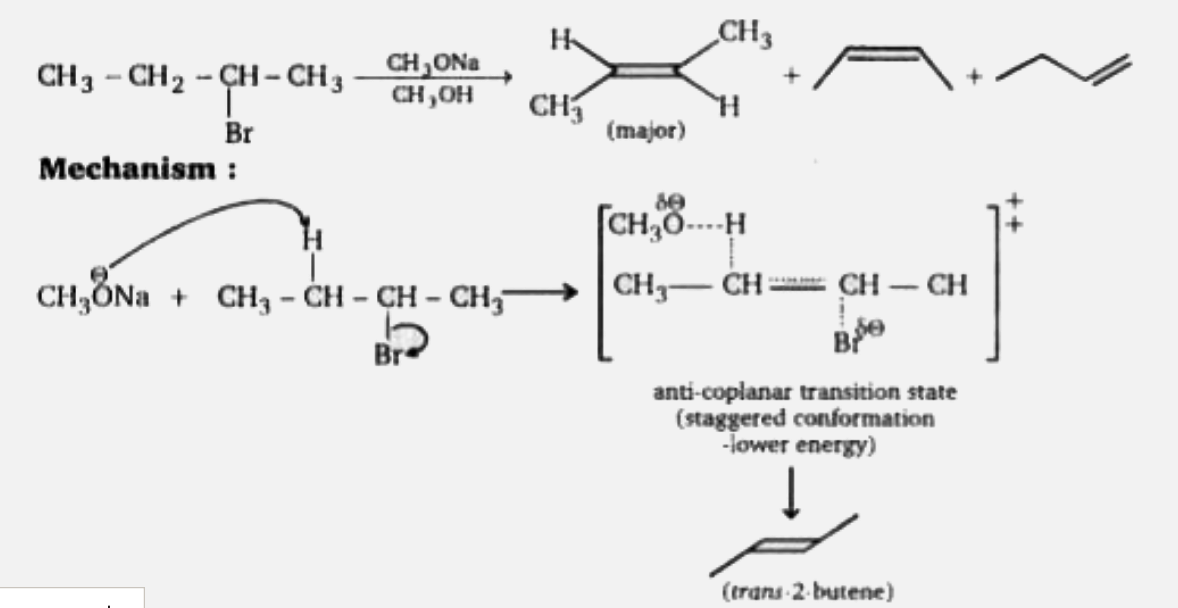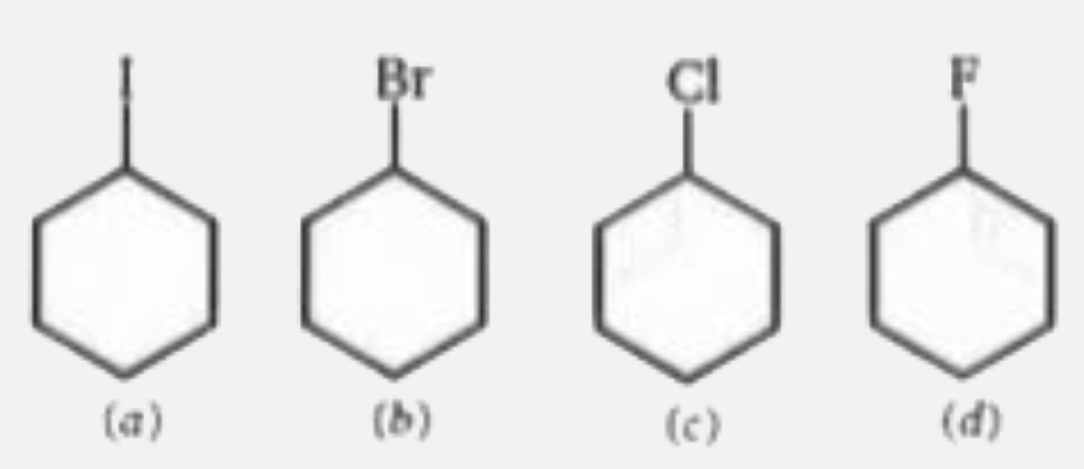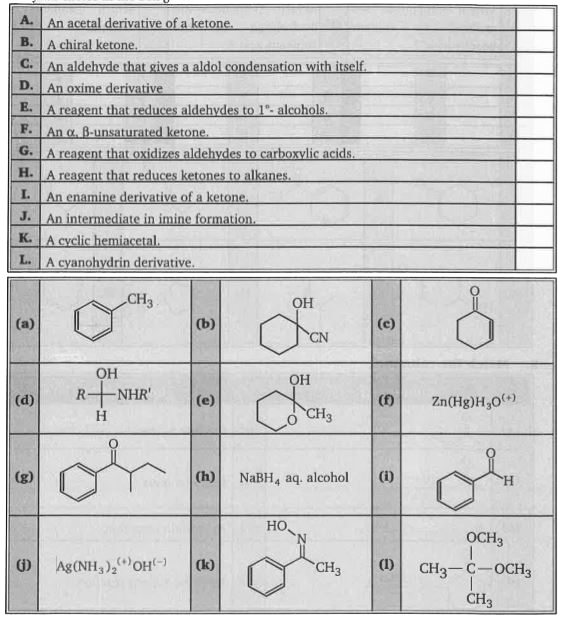The following bimolecular elimination reaction (E2) is carried out with different halogen leaving groups. The per cent yield of the two products (2·hexene and I-hexene) for each leaving group is listed below.

Which ofthe following statement is (are) true concerning this series of E2 reactions?Solution in Kannada
Based on the pKs 's of the conjugate acid ,I− is the best leaving group and F− is the pooreset leaving group
When I−Br−andCl− are used as leaving groups, Zaitsev's rule is followed.
F− is the stronger base (and therefore the poorest leaving group) and the transition statefor reactionwithfluoride as theleavinggrouphas theleastdoublebondcharacter
a,b,c are true
The correct Answer is:D
Informative question.
Topper's Solved these Questions
- BOOK - MS CHOUHANCHAPTER - ALKYL HALIDES (ELIMINATION REACTION) EXERCISE - LEVEL-225videos
ALKYL HALIDES (ELIMINATION REACTION)
- BOOK - MS CHOUHANCHAPTER - ALDEHYDES AND KETONESEXERCISE - LEVEL-220videos
ALDEHYDES AND KETONES
- BOOK - MS CHOUHANCHAPTER - ALKYL HALIDES (SUBSTITUTION REACTIONS)EXERCISE - LEVEL-241videos
ALKYL HALIDES (SUBSTITUTION REACTIONS)
Similar Questions
Comprehension
E2 raction → Elimination bimolecular
In the general mechanism of the E2 reaction a strong base abstract a proton on a carbon atom adjacent to the one of the leaving group. As the abstracts a proton , a double bond forms and the leaving group leaves.

Identify the rate of reaction of given compounds in E2 reaction:
 View Solution
View SolutionSelect the best choice for example (A to L) from the examples (a to n) given below. Write your choice in the box given.

 View Solution
View SolutionStatement - 1 : Nucleophilicity order in polar-protic solvent is I−<Br−<Cl−<F−
Statement-2 : Due to bigger size of I it is less solvated in polar-protic solvent.View SolutionE_(2) reaction to Elimation bimoleculaar in the general mechanism of the E_(2) reaction a sroeng base abstract a proton ,a double bond forms and the leaving group leaves Identify the rate for reaction of given compounds in E_2 reaction :
04:15View SolutionObserve the following reactions and its mechanistic steps and intermediate products.

The leaving group of step (V) in reaction -2:01:10:15View SolutionThe major product from the reaction of Br_(2) with Z-3-hexene is:
02:14View SolutionIn nucleophilic substitution reaction, the order of halogens as leaving group should be :
01:23View SolutionSN2 Reaction || Leaving Nature OF Leaving Group
View SolutionObserve the following reactions and its mechanistic steps and intermediate products. The leaving group of step (V) in reaction -2:
View SolutionCope elimination is an intramolecular E_2 reaction because
View SolutionWhich of the following alkyl halide gives only one product (excluding stereoisomer) when undergo E2 reaction ?
(E2 = elimination bi - molecular)View SolutionThe E2 product of the following reaction will be ?
 03:36View Solution
03:36View SolutionWhich of the following is used to convert 2-hexene to cons-2-hexene?
01:43View SolutionWhich of the following reagents is used to convert 2-hexene to cons-2-hexene
03:34View SolutionWhich of the following alkyl halide gives only one product (excluding stereoisomer) when undergo E2 reaction ?
(E2 = elimination bi - molecular)02:11View SolutionThe E2 product of the following reaction will be ?
 07:30View Solution
07:30View Solution

